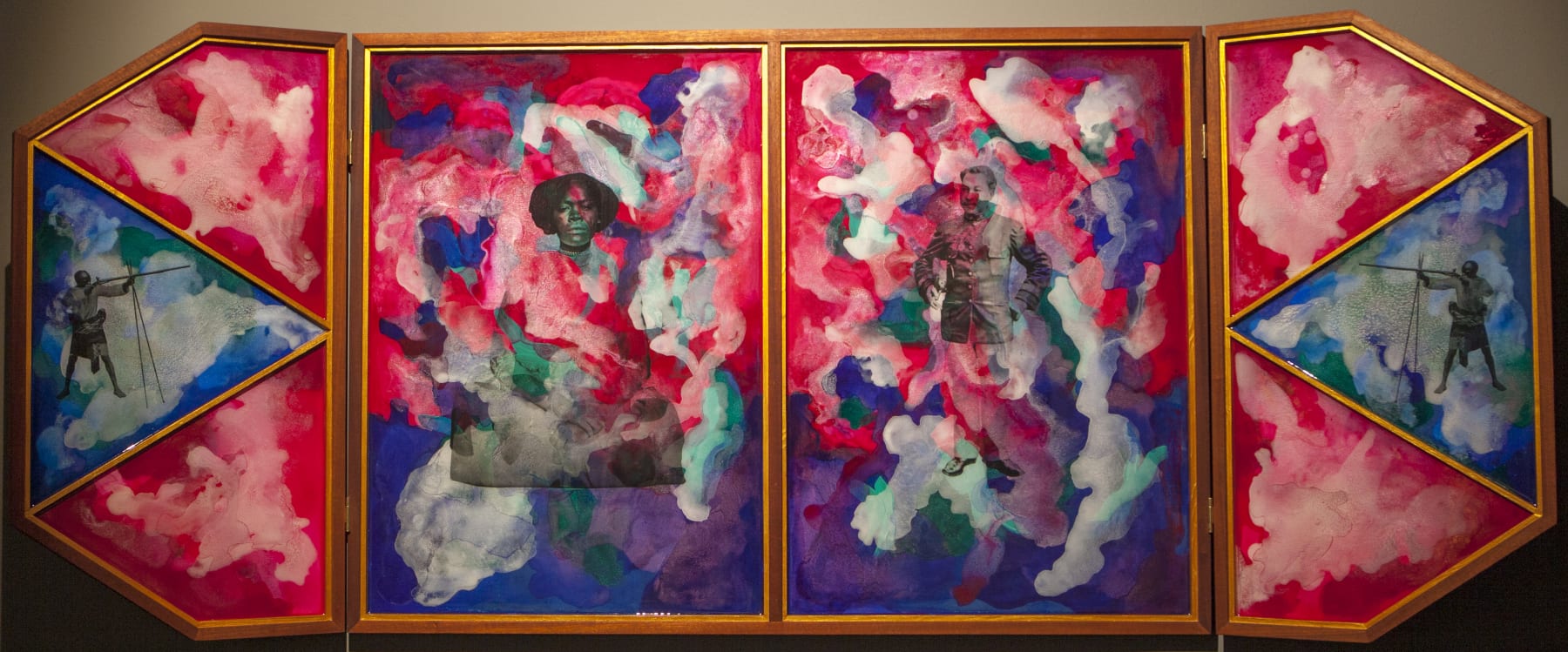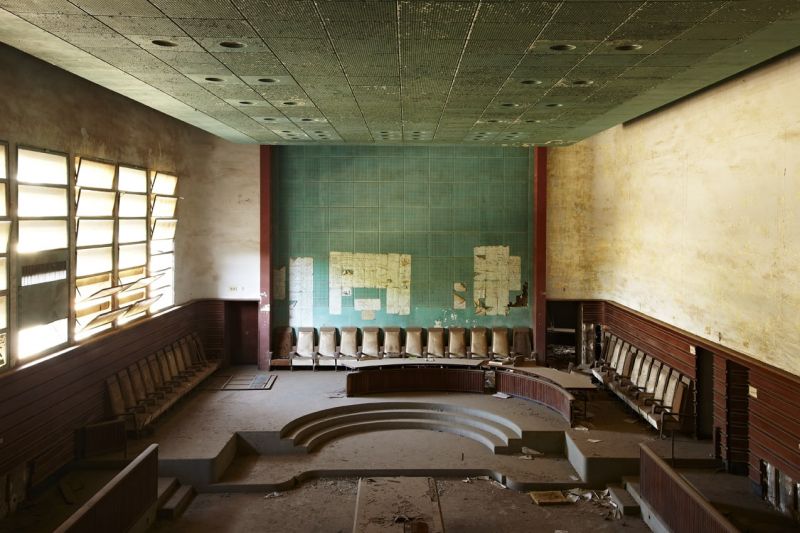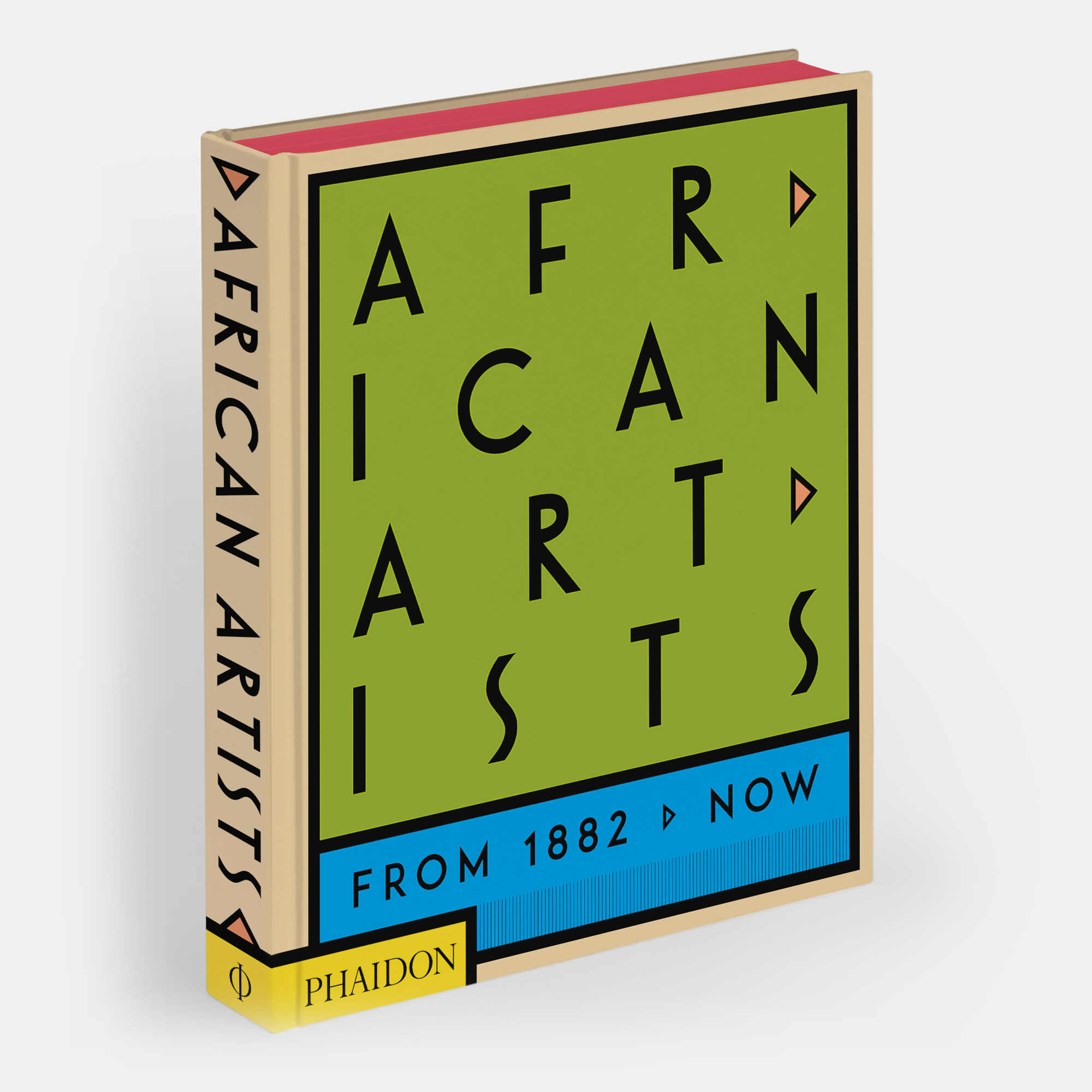
African Artists and Empire
The colonial and postcolonial experience looms large in our groundbreaking new book African Artists From 1882 to Now
One of the pleasures to be had leafing through our new book African Artists From 1882 to Now is the exposure to a hugely varied selection of works. Though this new survey takes a holistic approach to the continent, there’s no denying that the fifty-five countries and numerous ethnicities, some with histories stretching to the ancient world, have produced a startling range of artistic responses to our modern world.
Nevertheless, if there is one unifying experience for African artists it is probably the effects of empire. Almost every state in the region – bar a few exceptions such as Ethiopia and Liberia – have been colonised, and the legacy of that imperial rule lives on in the art.
Consider Politique des Races part one (above) a sublime, acrylic paint on sapele and birch wood panel painting by the Mauritian artist, Shiraz Bayjoo.
“Galvanized by the history of slavery and colonial activity in his native Mauritius, Bayjoo examines the enduring influence of European colonialism on contemporary African identity,” explains our new book. “Periods of intense research into the histories of migration, trade and empire inform his paintings, photographs and films, which are often exhibited together. His ambitious multimedia project ‘Searching for Libertalia’ weaves together various narratives from Madagascar’s history, including its involvement in piracy and slave trading between the seventeenth and nineteenth centuries and its fight for independence from the French Vichy government in the 1940s.
“This multi-panel painting from the project addresses Malagasy power dynamics under French colonial rule (1897–1960). It shows Queen Binao (1867–1927) and a pro-Vichy General flanked by coastal mercenaries, and its title refers to the island’s racial policy of divide and rule along ethnic lines introduced by the French. In setting archival photographs adrift in a sea of painterly abstraction, Bayjoo invites viewers to consider how such histories are framed and how the representing of forgotten episodes can challenge dominant cultural narratives.”
While Bayjoo considers the violent political history of empire, the French-born, Ivory Coast-based photographer, François-Xavier Gbré, looks at the ruins left behind when empires fall.

“The decaying modernist buildings of Europe and postcolonial Africa have been the focus of Gbré’s photography since the mid-2000s,” reads the text in our new book. “Inspired by the industrial decline he witnessed while growing up in northern France, the artist hunts down architectural ruins resonant with sociopolitical history, recording unseen spaces and overlooked details. Each colonial-era building, factory, hotel or swimming pool that he photographs has a story to tell, from the economic imperatives of post-industrial France to the impact of European involvement in West Africa.
This image is from his ‘Tracks’ series (2009–15), which is concerned with architecture’s relationship with memory and identity. It depicts the interior of a 1950s courtroom at the derelict Palais de Justice in Dakar, the former home of Senegal’s Supreme Court and a major vestige of French colonial power. The grand building, which was constructed as France’s empire was crumbling, was abandoned due to structural flaws. Like others in the series, the photograph stands as a testament to the impact of social and political change on the built environment.”

Westen powers may have left much of Africa, but their legacy certainly lives on in the works of these skilled and expressive African artists. To better understand how their artistry fits into a broader sweep of continental creativity, order a copy of African Artists here.